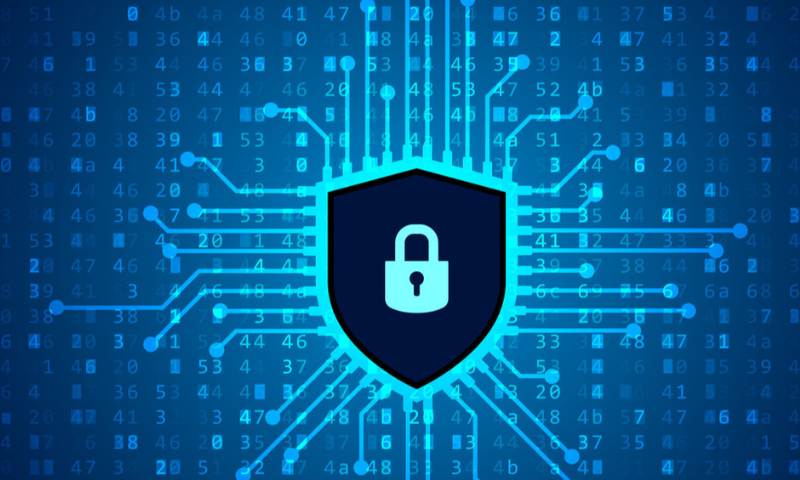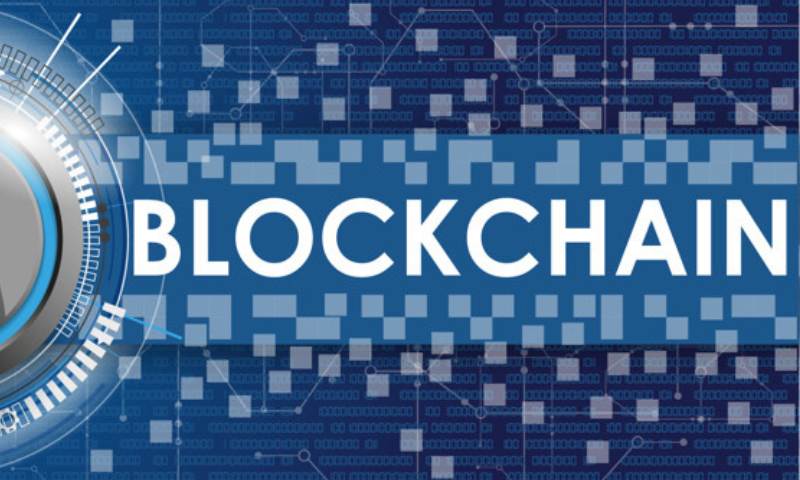Security Safeguards Unveiled: Mastering Enterprise Blockchain Adoption
Step into the digital age with confidence, knowing your critical systems are shielded. In this blog, you get the lowdown on the security requirements for enterprise blockchain adoption. We’ll cut through the noise to ensure your blockchain framework is as solid as a rock. From smart contract armor to node fortification, your path to a secure blockchain operation starts here. With my guidance, your enterprise will not only stand firm against threats but also thrive in this fast-evolving tech landscape. Lean in as we unlock the secrets to deploying a blockchain that means business—secure, compliant, and trustworthy. Let’s get your enterprise set for success, leaving nothing to chance in blockchain security.
Establishing a Secure Blockchain Framework
Implementing Enterprise Blockchain Security Best Practices
When we bring blockchain into business, we need to keep it safe. Just like putting money in a bank, you wouldn’t use a bank with a cracked safe. We must protect where our data lives. So, for businesses using blockchain, security tops the list. Here’s the deal: best practices in enterprise blockchain security are not just good ideas, they’re must-dos.
Rules for safety in the digital world are real simple. I’ll lay them out for you. First, pick strong guards for your gates, known as secure authentication methods. Just like a guard who knows who can or can’t enter, these methods check who’s allowed to join your blockchain party. Second, keep a close eye on who comes and goes. We call this access control, and it’s key to safety in any blockchain platform.
Third, we need to be sure smart contracts – our digital deals – are safe from tampering. Someone messing with them is like picking a lock. We want our locks tight and secure! And don’t forget, keeping the nodes in your blockchain safe is like making sure all doors are locked—every single one.
Always remember, blockchain is all about sharing but with a lock and key. We share info across many places to keep it safe. This means if someone tries to be sneaky, the truth is still safe somewhere else.
Designing for Distributed Ledger Security and Compliance
Now, let’s talk about designing for safety. It starts from the ground up. Like building a fortress before you store the gold. A strong design keeps out the baddies from our digital treasure. When we talk about distributed ledger security, we’re dealing with a whole team of fortresses.
“Permissioned blockchain” is a fancy term for a private party. It means only special guests – verified and trusted – can join. This makes compliance easier. It’s like having a list at the door. If your name is not on the list, you’re not coming in.
Real world rules must mesh with our digital ones. We call this compliance. It’s like playing by the park rules. When a business builds a blockchain, they must follow the same rules as everyone else. This keeps everyone playing fair. Smart, right?
Lastly, your business needs strength to grow. The fancy term is scalability. This means your blockchain gets bigger without breaking. It’s like fitting more gold into the same safe. The growth must keep the data safe as ever. This needs smart planning and checks all along the way.
Think of these tips as your treasure map for blockchain security. Get them right, and you’re sailing smooth on the blockchain sea. Arr!
Now, go ahead and set these practices in motion. Your business – and all its digital gold – will thank you for it.
Ensuring Smart Contract Safety and Node Security
Advanced Cryptographic Techniques for Smart Contracts
Smart contracts are like robot workers on the blockchain. They work day and night doing what they’re told. For a business to use blockchain well, its smart contracts must be safe. Think of a smart contract as a box with a lock. Only the right key can open it and carry out the contract’s job.
Now, to make sure this box is safe, we use something called cryptography. It’s like a superhero’s shield for smart contracts. Cryptography scrambles data so only people with the right key can read it. This keeps bad guys from stealing or changing the info in smart contracts. It’s just like a secret code between friends that no one else can understand. And since every business has its own secrets, this code must be tough to crack.
By using unique keys for each user, we can check who does what on a blockchain. That’s how we can find out who owns a certain piece of data or who did a specific action. This keeps everyone honest, and as a friend in the business, I can tell you: trust is gold.
Strategies for Secure Nodes in Enterprise Blockchain
Let’s now chat about nodes. Nodes are the eyes and ears of a blockchain. Each node checks on the others, and all must agree before anything changes. Think of it like everyone in a classroom raising their hands to agree on an answer.
But here’s the thing – if a node isn’t safe, the whole blockchain could hurt. That’s like having a big hole in a safety net. So, we work hard to keep nodes safe from harm. We build walls, set up guards, and use smart tech to do this.
We also make sure these node defenders stay sharp by testing them a lot. We play attack games, where we try to break into our own nodes. This helps us find weak spots before the real bad guys do. If a business keeps its nodes strong, the chain stays strong too.
By putting strong blocks together, we build a safe space for a business to grow. We’re like builders, using top-notch tools and materials to create a fortress. Safety here means the business can focus on what matters: growing and winning.
In sum, for a business to rock with blockchain, it must nail smart contract safety and node security. With great crypto shields and super-safe nodes, the money, ideas, and trust are all safe. That’s how a business using blockchain can shine and soar. And when it comes to guiding businesses to that safety, that’s what I do – I make sure their blockchain fortress is the best it can be!
Mitigating Risks with Robust Blockchain Security Protocols
Access Control and Authentication Methods for Enhanced Security
In blockchain, who gets in matters a lot. Firms need strong ways to make sure only the right folks can access their data. This is known as access control. Access control tells us who is allowed to enter a system and what they can do there. This helps keep data safe.
For a secure blockchain, firms use special keys. Much like keys to a door, these digital keys lock or unlock data access. There are private keys, which are super secret. There’s also public keys, which everyone can see. Used together, they confirm a user’s identity. This is what we call authentication. It proves you are who you say you are.
Sounds simple, yet it’s strong. Without the right keys, no access is possible. This halts hackers from stealing or changing data.
Another layer is multi-factor authentication, or MFA for short. Imagine needing both a password and a code from your phone to log in. That’s MFA at work. Even if a bad guy gets your password, they still can’t get in without your phone’s code.
These steps help ensure that firms’ blockchains stay off-limits to outsiders. They help keep the whole system secure and trusted.
Risk Assessment and Consensus Algorithm Security in DLT
Now, every system has flaws. It’s crucial to find and fix them fast. This process is known as risk assessment. Think of risk assessment like inspecting a car before a long trip. It’s all about finding what could go wrong before it does.
In blockchain, part of this is checking how decisions are made, or the consensus algorithm. This algorithm is the heart of any blockchain. It’s a set of rules on how to agree on the data. It ensures everyone plays fair and follows the same rules.
But, if the heart has a problem, the whole body suffers. A flaw in the consensus could let a hacker take control. They could twist the blockchain’s truth to their favor. This is why firms take great care in picking and testing their consensus algorithm.
For instance, Proof of Work, a famous consensus type, is used by Bitcoin. Yet, it takes a lot of energy. There’s also Proof of Stake, which is more new and uses less energy. Each has its pros and cons in security.
In the end, having a solid risk plan means every part of the blockchain gets checked. Nothing is missed. This keeps the blockchain healthy and safe.
These steps for access and risk management are like the armor and shield for any enterprise blockchain. They stop threats and give firms the confidence to use this powerful tech. With it, they can change how they do business, keeping data safe, secret, and star-proof from attacks.
Auditing and Governance: Upholding Blockchain Integrity
Evaluating and Auditing Blockchain Transactions for Data Integrity
When you put money in the bank, you trust it’s safe, right? Blockchain works the same. But instead of a bank, it’s a special kind of digital record. Imagine a notebook where you write down who owns what. Everyone can see this notebook, so no one can cheat. The notebook is super safe because it uses codes no one can break. We call these codes blockchain.
People like me make sure no one can mess with the blockchain. We’re like detectives with a magnifying glass. We look at all the codes and make sure everything adds up. We check every single transaction, like a teacher with a red pen, marking anything that doesn’t look right.
But there’s more! In blockchain, there are rules. These are like the school rules that keep things fair. My job is to check the rules too. I have to make sure the blockchain follows all the laws, just like you must follow the school rules.
Blockchain Governance Models and Regulatory Compliance
Every company uses its own rule book. So, in blockchain, we have something called governance models. They’re like game rule books. They tell everyone how to play fair. For blockchain, these rules make sure everything runs smooth. They help everyone agree and keep things in order. My job is to help find the best rule book for each company.
And you know how there are rules we all follow, like traffic lights? Companies must also follow bigger rules. They’re called laws. In blockchain, there are laws about keeping data safe and private. My job is to help companies follow these laws. I check and double-check that the blockchain doesn’t break any rules.
Governance models and the law work together. They keep blockchain good and help us trust it. Just like we trust a traffic light to work right. I’m here to make sure that trust stays strong. That’s my promise to you as a blockchain guardian.
By keeping an eye on every transaction and using the best rule books, we can make sure that blockchain is a super safe place for everyone’s notebook. It’s a big job, but it’s all about keeping that trust we talked about. Whether it’s a kid trading cards or a big company doing business, we’re all playing in a fair, safe game. And that’s what makes blockchain so cool!
In this article, we tackled establishing a sturdy blockchain framework, focusing on security at every level. We explored best practices for enterprise blockchain security and the essentials of designing distributed ledgers with security and compliance in mind.
We also dug into smart contract safety and methods to keep blockchain nodes secure. By using advanced crypto tricks and strategies for nodes, we can protect enterprise blockchain effectively.
Then, we discussed cutting risks with solid blockchain protocols. We saw how access control and smart ways to check who gets in can make systems safer. We learned to assess risks and make sure consensus algorithms in distributed ledger tech are reliable.
Lastly, we looked at auditing and governance to keep blockchain honest and in line with rules. We covered how to check and audit blockchain deals for honest data and the kinds of governance models that keep things smooth and lawful.
To wrap up, these pointers are here to arm you with the knowledge you need. With them, you can build and run a secure, trustworthy blockchain system. The goal is clear—keep your blockchain secure and dependable, and you’re set for success.
Q&A :
What are the primary security measures necessary for enterprise blockchain implementation?
When implementing enterprise blockchain solutions, it’s crucial to prioritize effective security protocols due to the sensitive nature of business transactions. Primary measures include robust authentication processes, permission controls, secure key management, consistent data encryption, and smart contract security. Additionally, businesses must consider network security, regular security audits, and establishing comprehensive risk management strategies to protect against evolving cyber threats.
How can an enterprise ensure compliance with security standards in blockchain adoption?
Ensuring compliance with security standards in blockchain adoption involves a multi-faceted approach. Enterprises should stay informed about relevant local and international regulations, such as GDPR for data protection or specific financial industry requirements. They must also implement security frameworks like ISO/IEC 27001 and align their blockchain solutions with industry-specific guidelines. Regular compliance audits and engaging with cybersecurity experts can further reinforce adherence to security standards.
What role does encryption play in securing an enterprise blockchain?
Encryption is a fundamental aspect of securing an enterprise blockchain, as it safeguards data against unauthorized access and tampering. By encrypting transactions and blocks, only participants with the correct decryption keys can view or alter the information. This secures record-keeping from end to end, enhances data privacy, and protects against both internal and external threats. Enterprises should consider advanced encryption methods and manage encryption keys diligently to maintain the integrity of their blockchain networks.
Are smart contracts a security risk in enterprise blockchain adoption?
Smart contracts automate transaction processing on blockchain networks, but they also present potential security risks. As executable codes, they can contain vulnerabilities or bugs that malicious parties may exploit. To mitigate these risks, enterprises must thoroughly test smart contracts for weaknesses, conduct regular security audits, and maintain robust incident response protocols. Using secure coding practices and reputable auditing services can enhance the reliability and safety of smart contracts in a blockchain environment.
What strategies can enterprises follow to mitigate the risks associated with blockchain security?
Enterprises can mitigate risks associated with blockchain security by adopting a layered security approach. This includes continuous monitoring of the network activity, employing anti-malware tools, conducting routine security assessments, and ensuring that all participants adhere to defined security practices. Regular training and awareness programs can help familiarize staff with security protocols. Furthermore, having an up-to-date incident response plan helps to quickly address any security breaches that may occur.


